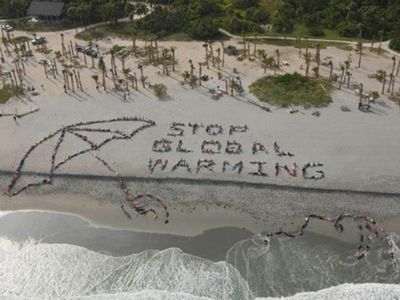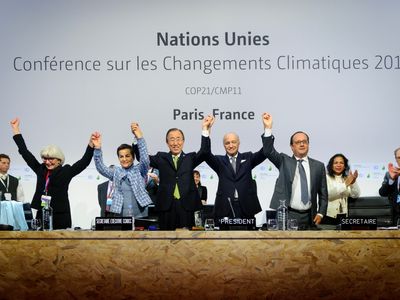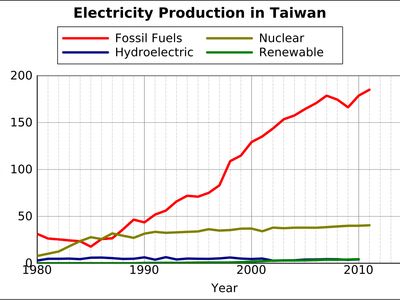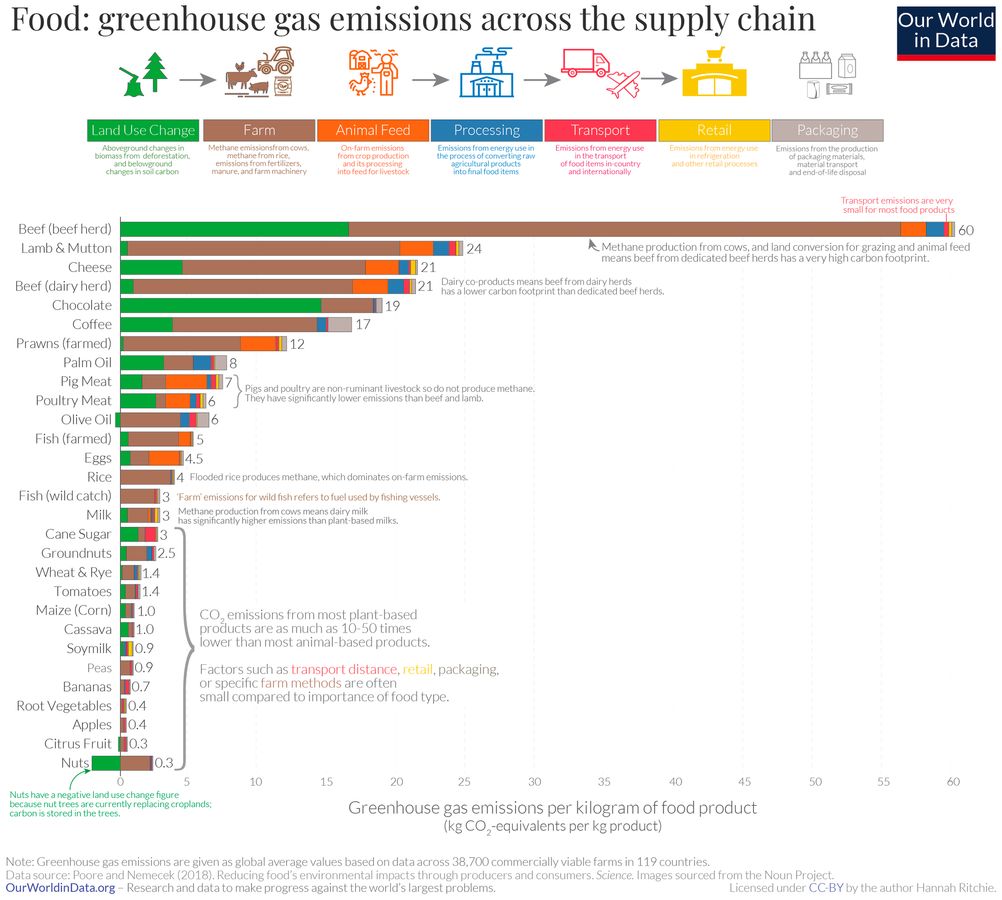Actions Taken
Less than ten years ago, geographical terms such as “global warming”, “greenhouse effect”, and “rising of sea level” began to appear consistently in our daily life. This change illustrates the fact that, from now on, we have to stop saying that climate change is nothing but a boring urban myth. We must accept the deterioration of the global climate and be ready to make efforts. We’re the only force standing against the touchable apocalypse of Earth.
No one is innocent. Everyone has contributed to the acceleration of global warming. Although the choice is not completely according to our free will, how many of us think of drowning polar bears when we drive? In 2022, our civilization will continue to damage the earth, but we will also try to compensate for and balance the damages it has done. We’re going to achieve our promised goals one step at a time and bring back the promised land to our future generations.

International Cooperation: Accord de Paris
The 195 nations in the UN (193 member nations and 2 Observer nations) passed the “Paris Agreement” on 12 December 2015. Then, on 22 April 2016 (Earth Day), 171 nations in the UN signed the Paris Agreement. The agreement emphasizes that

- The average temperature on Earth in the whole 21 century can only be 2℃ higher than the average temperature in the pre-industrial era. The agreement encourages the member nations to aim at keeping the temperature only 1.5℃ higher than the pre-industrial era temperature.
- Rich countries (e.g. US) have the responsibility to provide 100 billion dollars from 2020 to 2025 as the “fund responsive to global climate change” (the nations will discuss the number of funds again in 2025).
- The developed countries must take responsibility and lead a series of carbon reduction activities. On the other hand, developing countries also have to reduce as many carbon emissions as possible.
- The amount of carbon released from human activities should be equivalent to the amount of carbon the natural carbon sinks could absorb in 2025.
- Developed countries must fund the developing countries for carbon reduction activities.
- The member nations of the agreement will have a meeting once in five years to examine the contributions each member nation has made (next meeting: 2023).
- The member nations must try their best to decrease the climate-change damages in countries with low carrying capacity (e.g. Island countries in the Pacific Ocean).
Contribution from Nations
US (United States)
In 2014, American former president Obama agreed to an article that forces all American power plants to reduce 30% of their carbon emission by 2030. Moreover, Obama signed an executive order that asked the whole nation to reduce their greenhouse gas emissions by 40% in 2025 (i.e. after ten years). The amount of reduced greenhouse gases is equivalent to the gases emitted by 5.5 million cars in a year.
PRC (People’s Republic of China)
Chairman Xi Jinping promises that China will increase the use of clean energy to 20% and there will be no excess greenhouse emissions. Furthermore, China proposes the “Low Carbon Economy” policy, which effectively boosts the country’s economy while participating in making the world a cleaner place (e.g. using renewable energy and resources).
EU (European Union)
The European Union aims to reduce 40% of the carbon emission (61 member nations of the EU are responsible for 48% of the world’s carbon emissions due to human activities). Moreover, French and England are going to close all the fossil fuel power plants in 2023 and 2025.
Taiwan
Taiwan passed the “Greenhouse Gas Reduction and Management Act” to reduce half of the greenhouse gas emissions by 2030. The government also encourages green production, green consumption, and a green economy (e.g. promoting green energy power plants). In addition, on February 23, 2016, the Executive Yuan approved the “National Action Plan for Addressing Climate Change”, which aims to adjust the guidelines for climate change action in order to achieve the national long-term greenhouse gas reduction goal (2050) in a more efficient way.
Furthermore, aside from setting laws and creating guidelines, the Taiwanese government also strongly promotes the use of renewable energy. Major types of renewable energy in Taiwan include wind, hydro, and solar energy. Although Taiwan has always been dominated by thermal power generation, the proportion of renewable energy has increased significantly in the past few years (although the proportion is still low from a bigger perspective). However, even though the use of renewable energy has increased, there is still a long way to go before Taiwan’s 2025 goal (see Figure 4).
Therefore, although Taiwan has encountered some difficulties in the implementation of renewable energy construction (e.g. the energy output of the wind turbines in the western coastal area is not as high as expected because of the abnormal wind due to serious climate change events), Taiwan and other developed countries have already embarked on the road of carbon reduction and sustainable development, and what we citizens can do is to change our daily routines and encourage those around us to do the same thing.


Furthermore, when facing the problems of marine debris, Taiwan released the “Taiwan Marine Debris Management Action Plan” in 2018 to restrict the production and consumption of potential marine debris. The plan announces that in 2030, the nation should ban all the usage of plastic straws, bags, utensils, drinking cups, and other plastic products. One year after the establishment of the plan, Taiwan started to strongly encourage its people to eliminate the usage of plastic bags (most industries use paper straws instead).
In recent years, Taiwan also committed to beach cleaning and the extended activities of that. Taiwanese government also invite local environmental groups to investigate the elements contained in all of the gathered marine debris to discover the major matter that plays an important role in polluting the ocean. Moreover, Taiwan will also try its best to stop trashes in the river to flow to the ocean or to beaches in the other regions.
Another contribution to the slowdown of global climate change is the construction of green buildings. Green buildings are any constructions that are eco-friendly and efficient in using resources when building or functioning the place; green buildings are the perfect balance between human activities and the natural environment. Taiwan has many renowned green buildings, they claimed to be the representatives of “using the least earth resources, creating the least wastes”. The Beitou Library is undoubtedly the most famous green building in Taiwan. According to the American website Flavorwire.com, it was one of the 25 most beautiful libraries in the world. Moreover, the library is, stated by the website “WHEN ON EARTH”, one of the 10 coolest green buildings in the world. The reason the Beitou Library can win so many awards is because of its perfection mingle with the surrounding environment- Beitou park. For example, the library uses a lot of windows to bring natural tree shade and warm sunlight to eliminate the usage of air conditioners. Ultimately, the presence of beautiful green buildings like the Beitou library informs us that green doesn’t necessarily mean primitive or old, it can also be very innovative. Green buildings allow people to see a different version of our future, an eco-friendly future.

Taiwan and the World
Regardless of making Taiwan a cleaner place, the Taiwanese government and local eco-friendly businesses also develop a “green industrial chain” with foreign big industries. This plan makes the “green economy” not only a “waste-of-money” product, but a potential business to earn profit. For example, Taiwan once held the “Taiwan International Circular Economy Exhibition” and discussed sustainable economic development from a policy perspective with companies and government officials from various countries and established a sustainable industrial supply chain with Taiwan, looking forward to sparking fireworks.
What can we do?
There’s the need for supply only when people are demanding it, this is how industries interact with us consumers every day. Vice versa, if we stop demanding for high carbon footprint products (e.g. beef, lamb, cheese), we can lead the industries to decrease the number of carbon emissions (low carbon food: fruit, vegetables, nuts). This is a minor contribution everyone can make for the greater good of all.
